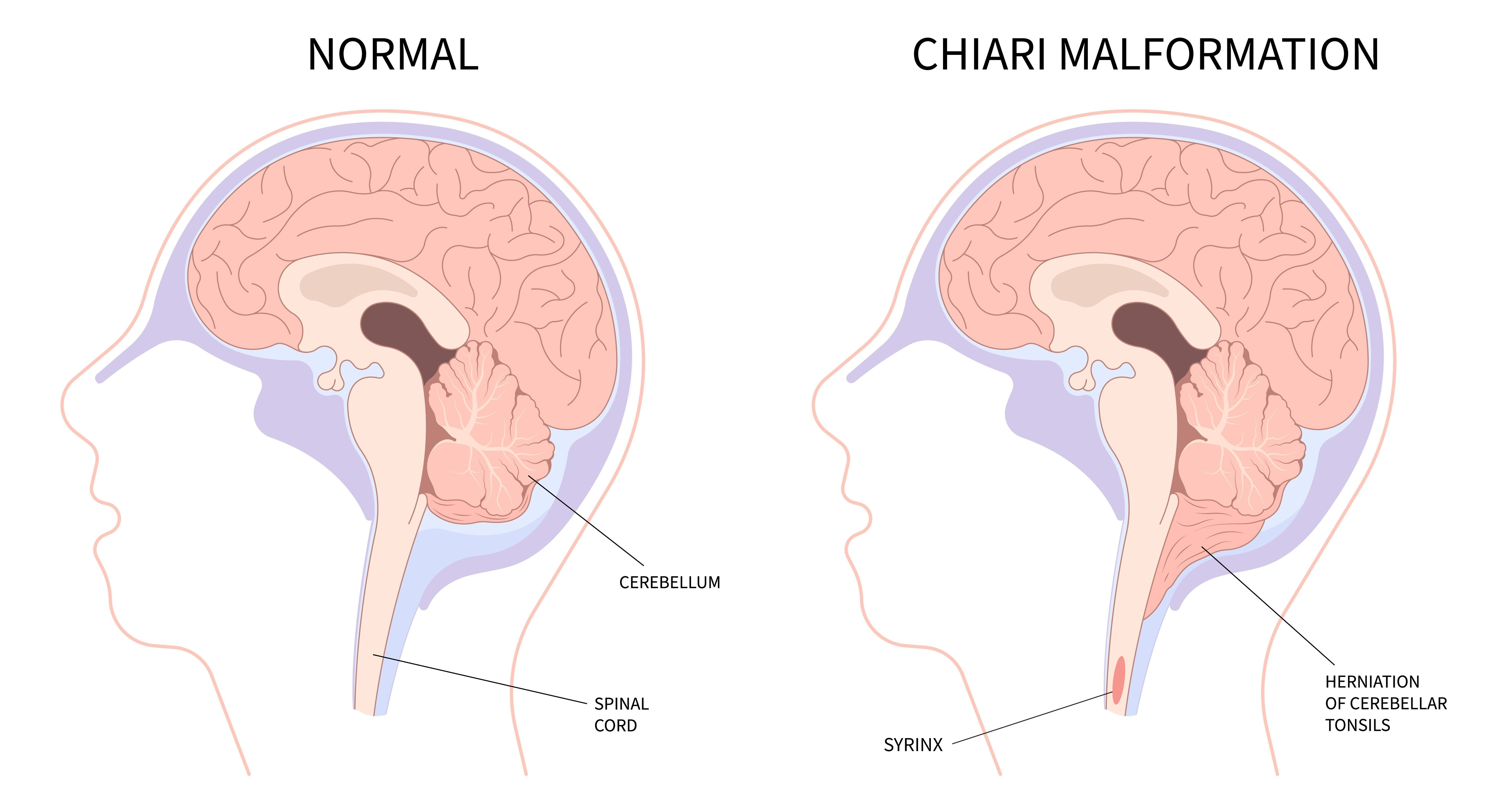
What is a Chiari malformation/syringomyelia?
Chiari Malformation is a neurological disorder where the bottom part of the brain, known as the cerebellum, descends out of the skull and crowds the spinal cord. This puts pressure on both the brain and spine, thereby disrupting the normal flow of cerebrospinal fluid (CSF). This is also known as Arnold-Chiari malformation. The most common symptom is severe headaches, usually in the back of the head, that are made worse by straining, coughing, sneezing, or bending over. Other symptoms include balance problems, visual disturbances, and trouble swallowing. When the flow of CSF fluid is blocked, it can create a sort of pocket or hollow space within the spinal cord. This space, called a syrinx, fills up with fluid over time. The syrinx can put pressure on the spinal cord and cause problems with how the nerves communicate, leading to symptoms like pain, weakness, and numbness.
Treatment
Diagnosis is key
We will use imaging and screening tools to create an individualized treatment plan for each patient.
It is important to note that not all Chiari malformations require surgery
Medical Treatment
Symptoms can be treated with medications, physical therapy, lifestyle modifications, monitoring, and observation.
Surgery
In more severe cases or when symptoms don’t respond well to conservative measures, surgery might be considered. This involves decompression surgery to help restore the normal flow of cerebrospinal fluid.
Support
All patients will require some form of support including educational resources, psychological support, peer support groups, research participation, awareness campaigns, etc.